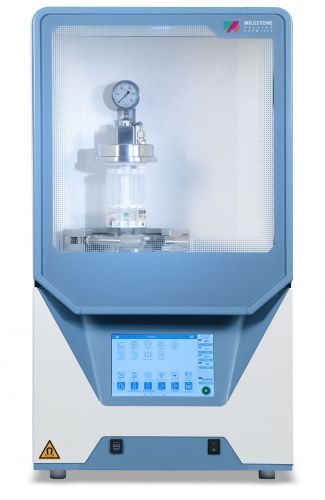Advancing Elemental Analysis of Petroleum Products through Microwave Digestion
September 10, 2025

Petroleum-based materials, including crude oils, lubricants, residues, and asphaltenes, present a particular challenge due to their complex composition of heavy hydrocarbons, metals, and additives that complicate full decomposition. Accurate determination of trace elements – such as vanadium, nickel, iron, sulfur, calcium, and zinc, which directly impact refining efficiency and product quality – depends on complete and reproducible sample digestion.
Standards and Methods in Petroleum Elemental Analysis
- ASTM D5185 – Multielement determination of wear metals, contaminants, and additives in lubricating oils by ICP-OES.
- ASTM D4951 – Additive elements in lubricating oils by ICP-OES, requiring complete digestion of complex organic additives.
- ISO 10478 – Trace metals in crude petroleum and petroleum products by ICP techniques.
- ASTM D5708 – Determination of nickel, vanadium, and iron in crude oils and residual fuels.
Each of these methods relies on quantitative sample decomposition. Incomplete digestion leads to poor recovery, spectral interferences, and compromised detection limits.
Why Microwave Digestion Stands Out
· Traditional open-vessel methods can take hours or even days. In contrast, microwave digestion completes the process in as little as 20 to 60 minutes – significantly boosting sample throughput and laboratory productivity
· Operating in a sealed environment reduces contamination risks and improves consistency. Close control over temperature and pressure ensures highly reproducible digestions, even with mixed sample batches
· Handling strong acids at elevated temperatures and pressures requires robust safety features. To this end, microwaves systems are equipped with interlocks, pressure relief valves, exhaust systems, and automatic shutdown protocols to maintain operator safety and protect lab integrity
How UltraWAVE Differs from Conventional Microwave Digestion
Unlike rotor-based systems, all samples in UltraWAVE are digested in one pressurized chamber – Single Reaction Chamber (SRC) Design. This ensures identical temperature and pressure conditions for every sample, eliminating variability between vessels.
The SRC approach reduces the amount of acid required compared to conventional microwave digestion. The result is lower reagent blanks, cleaner digests, and improved detection limits for trace elements in ICP-MS or ICP-OES analysis.
UltraWAVE operates at up to 300 °C and 199 bar, far beyond the limits of conventional vessels. These extreme conditions guarantee complete breakdown of even the most resistant petroleum matrices, including heavy oils and viscous residues.
Since all samples share the same reaction environment, petroleum products can be digested alongside lubricants, additives, or even inorganic matrices in the same run – without risk of cross-contamination or incomplete digestion.
Conclusion
UltraWAVE ensures reproducible, contamination-free digestions even for the most challenging petroleum matrices. For laboratories engaged in ASTM D5185, ASTM D4951, ISO 10478, or ASTM D5708, UltraWAVE provides not just operational efficiency but also the scientific rigor required for regulatory compliance and reliable decision-making in petroleum testing.


Call Today 1-800-661-6700